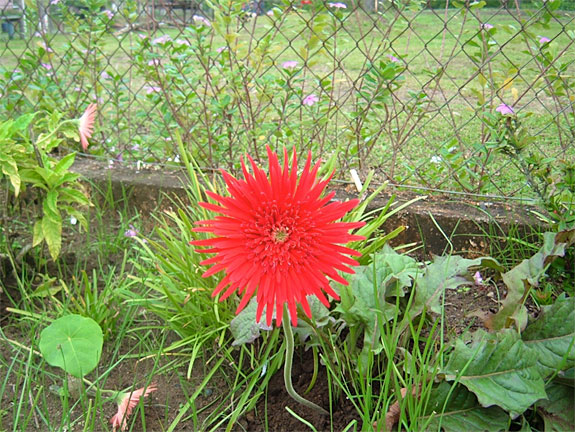National Archives of Fiji Project & Oceania Marist Province Archives Project, Suva, Fiji, June 20 to July 1, 2016
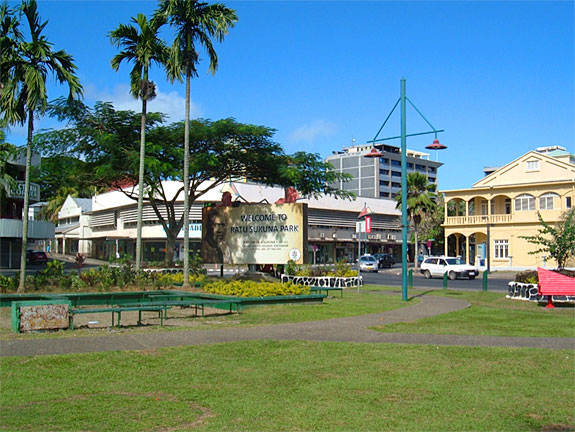
Suva, Fiji, has vastly become my home away from home as I have had projects in the capital town for the past three years. Although I come for the projects, it is the friendly smiles, amicable camaraderie, and the bountiful of delicious food during celebrations that does not make me hesitate to plan a return visit. Like previous visits to the city, I found myself merrily bouncing around from one archives to another like a happy myna bird. Suva is rich in culture which truly shows by the many number of organizational archives that can be found throughout the town and have taken a committed interest in preserving their history. It is encouraging to see that despite the lack of resources, funding limitations and staff expertise, archivists and record managers of these organizations remain positive while discovering inventive ways to safe keep their records.
My two main projects in Suva were working at the National Archives of Fiji (NAF) and the archives at the Oceania Marist Province (OMPA), respectively. The NAF have made great strides since my first visit three years ago. It now boasts a staff of more than thirty employees in five archival sections that include, Archives Administration and Advisory Services, the Sir Alport Barker Library, Microfilm and Photocopy Unit, Conservation Unit and the Digital Continuity Unit. Their Facebook page has over 27,000 followers and is growing every day, and the archives has just recently created and launched a new Website. Today, through their vision and mission, the NAF has become the premiere archival institution in Fiji for collecting and safeguarding authentic records, supporting evidence based governance and inspiring Fijians to explore and share their history. The archives has also become very active within the community as well as with the communities of the outter Fijian islands to promote their collections and services. They eagerly and enthusiastically conduct outreach services at Open days, road shows, conferences and festivals throughout the islands and the region.
The OMPA, on the other hand, is a much smaller archives than the NAF that contains a rich history of the Marist's mission in the Pacific Islands region. The collection dates back to when the Marists first arrived in Fiji in about 1844. The archives also contains documents created by Marist's work in other islands such as Papua New Guinea, New Caledonia, Samoa, Solomon Islands, Tonga, Vanuatu and Wallis and Futuna. The archives is safeguarded by one person who works part-time which in the archives field would be known as a "lone-arranger." Fortunately, over the years volunteers have created a stable environment for the records and easily accessible collections.
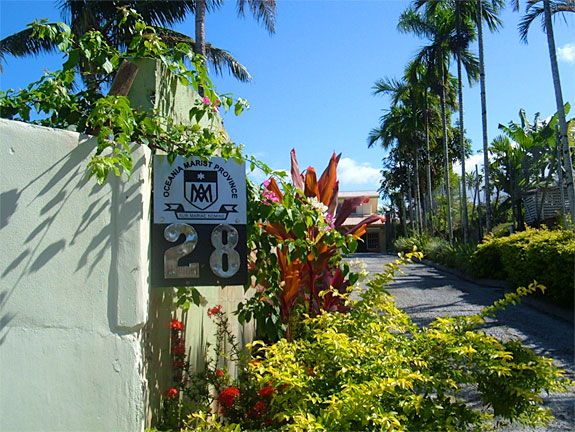
I divided my time at both archives during the first week of my visit. I spent my mornings with Father Roger McCarrick, Archivist, at the OMPA. The project that we believed took precedent was to describe and create box lists for the photograph collection. By doing this it would make access to the photographs easier. The project was also meant to help identify important and special photographs that will need to be digitized at a later date. The oldest photographs date back to the late 19th century and were loosely arranged by place, usually by town or mission. Each island that the Marists worked in composed a box with Fiji being represented with the most boxes. In total, the collection consisted of hundreds of photographs that were held in thirty-two boxes. It was a significant collection that not only told the story of the individual Marists priests, the photographs also told the story of the mission stations and the people who were associated with them.
The workflow included going through one box at a time and list each photograph in a Word document. Most of the photographs were in good to fair conditions. Some of the older, particularly the 19th century ones, were suffering from fading and should have high priority when it comes time to digitize the collection. There was some preservation treatment applied to the photographs as they were being listed. Many of them were being housed in acid-laden envelopes, and thus, these envelopes were replaced with acid-free ones. If the photograph contained metadata, this was written down on the new envelope. Typically, the metadata was quite concise with only a name and a date. Father Roger tried to add metadata to the ones that did not contain any information. Dates were the hardest to come up with, but at times, Father Roger was able to take an educated guess due to his knowledge of the subject. In each box a group of related photographs were attached to a piece of cardboard by glue or tape like pages from an album. It was best to leave these alone as the act of dislodging them from the cardboard could easily damage the photograph. Many of these photographs are dated to the late 19th century to the mid-20th century and merit to be on the priority list for digitization. Some boxes contained many photographs while others held only a handful. If the box that contained the photographs was torn and in bad shape, it was replaced with a new acid-free box.
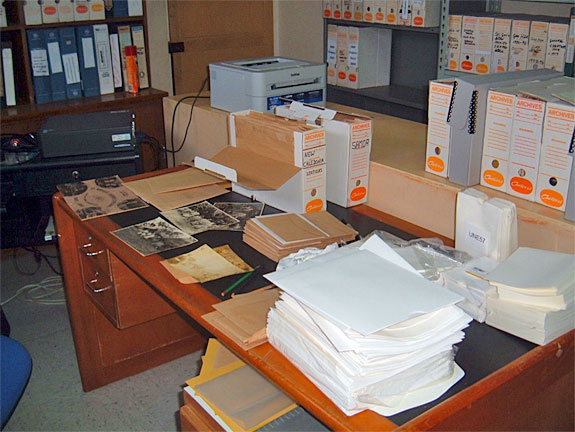
The project went well but slow depending on the box. Although we tried to keep the original order of the boxes, there were times where we had to move some photographs to another box where it fit better because of its nature. Unfortunately, the project had to come to an abrupt end and after the first week due to unforeseen issues at the Oceania Marist Province house where the archives is located. By then we had processed, preserved and listed the contents of eight boxes. This was a shame as we were just getting to a point where we understood the collection better We also got to a point where we had good rhythm knowing how to do deal with each photograph. Nevertheless, we vowed to return to the project in the near future. The nice thing is that all the archival supplies for the project have remained with the archives, and so, it would be just a matter of getting back together to continue the good work.
In the afternoons I spent my time with Opeta Alefaio, Director, at the National Archives of Fiji. The main project was to work with the Recordkeeping Unit under the direction of Timoci Balenaivalu and perform descriptive work on a collection. The goal was to produce a finding guide for the collection that the unit could use as an example as they describe collections in the future. Many of the archives' finding guides have gone missing over the years, and it was time to re-set descriptive standards for the unit. Because many of the unit's staff are fairly new employees, it was time for the unit's supervisors to look at their descriptive procedures and to see how they can better the work-flow. The Archives has been recently looking into adding an open-source database where they can input their described collections. Until they decide on one, they will have to do description work manually by writing it down, or using an office computer to make their notes. Keep in mind that most employees in this unit do not have a computer at their workstation. Thus, when the unit becomes automated, it will make description work easier to do. Plus, the new database will help researchers find information a lot more quickly. In the meantime, the unit need to establish a consistent list of descriptive elements for the collections.
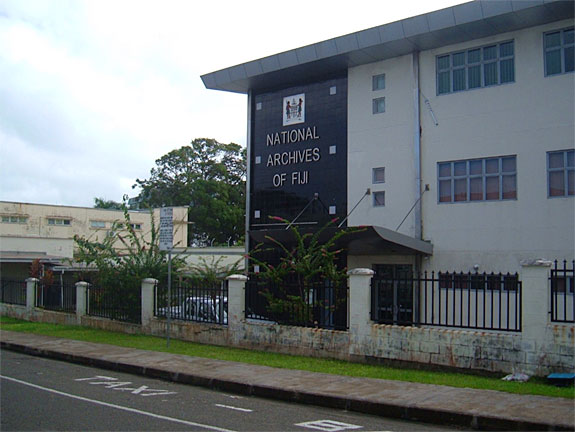
The collection that I was given to describe was the Colonial Secretary Office (CSO) 'F' Series Files Records, 1946-1972. The collection was housed in thirteen boxes that contained on average six folders which held mainly records from township councils. The towns and cities involved were ones that could be found on the main island of Viti Levu and consisted of Suva, Lautoka, Ba, Nausori, Levuka, Sigatoka, Nadi, and Labasa. The items in the collection were the typical pre-independence government records such as, board meeting minutes, correspondences, memorandum, annual reports, financial statements, and meeting notes. Some of the more intriguing records within the collection was a Local Government in Fiji Establishment brochure (1953), a Western District tour diary (1953) and survey maps, some of which were hand drawn. Overall, the records of the collection were in good to fair condition. Very little preservation work had been done to the records. Handwritten, original and carbons, typewritten, news clippings were included in this collection. Of particular importance were the hand drawn maps that will be classified as fragile and will merit photocopying or scanning.
It took several days to describe the CSO 'F' Series collection. I started by creating a box list for each box which is really the most basic form of description work. This work was the most laborious as I went through each folder and wrote down the different sub-series that make-up the collection. Fortunately, a few of the boxes were composed of only township board meeting minutes which made the descriptive process move a bit quicker. I typically do not describe a collection to the item level especially large collections. However, I would note any significant items such as a unique hand drawn map or an intriguing letter. After the box lists were complete, I was able to use the information to form a finding guide for the collection. The key with creating the finding guide was to describe the collection with a set of descriptive elements. Although there are many elements that could go into a descriptive finding aid, the goal was to incorporate the ten main, required elements so that NAF staff could use as an example and apply them towards future description work. The required elements included, title, reference number, name of location of repository, date, creators, extent, scope and content, access conditions and language. When the finding guide was completed, I sat with the Recordkeeping Unit's manager, and went over it with him. We had planned to present it to his staff at their next unit meeting, but the meeting was cancelled due to the absence of employees. Nevertheless, he assured me that he would go over the descriptive elements at the next unit meeting.
As I was describing the CSO collection, other tasks arose for me throughout the archives. The first was helping the Pacific Regional Branch of the International Council on Archives' (PARBICA) efforts of overhauling the University of South Pacific (USP) Library Information Services (LIS) program and expanding it to a full degree qualification. PARBICA would like to see USP add archival services, records management, knowledge management and other components to the existing LIS Diploma curriculum to provide students with a more comprehensive set of information management skills. I found this to be an excellent idea and long overdue, and thus, I took some time to write an endorsement letter in favor of the proposal. A second task involved the library where the librarian wanted to revise the research room policy. The research room is connected to the library and it is used for the library patrons as well as for researchers who wish to use archive collections. I, then, re-wrote the research room policy to include rules and procedures for both sets of users. The third and final side-job during my stay at the NAF was to suggest and recommend to Opeta different services that the library could offer to patrons. The NAF is also home to the National Library and management feels the time is right to upgrade their library services and properly perform and present them. We brainstormed many good ideas relevant for the organization such as offering genealogy, outreach and research services, building an Indo-Fijian collection, having access to online journals and sponsoring library events at the Archives. The director of the Archives planned on attending a library conference in New Zealand where he hopes to meet with library professionals and learn of ideas that will move the library forward.
As luck would have it, I happened to be in Suva on the day that the NAF was celebrating International Archives Day (IAD). Normally, IAD is observed on June 9 every year, but the NAF decided to postpone their celebrations until Saturday, June 25, and had an open day at the Archives from 9am until about 3pm. A tent was set up in the courtyard of the Archives and the staff provided tea and snacks for early visitors. It was a splendid, festive day that attracted more than a hundred people. Under the tent visitors were able to learn about the Archives and the services it offers, then the people were allowed to tour the inside of the building. The library staff displayed historic, rare books and talked about the role that the library plays in the archives, and the type of collections that one would find there. The Conservation Unit showed visitors the types of tools and equipment that they use to conserve records, and gave demonstrations at a couple of conservation stations. Perhaps, the highlight of the day was when visitors that were led by Archives' staff got to visit a part of the repository and view (not touch) an assortment of records that the Archives holds. Some of the records that were on display included the Instrument of Cession (1874), Photos of famous chiefs who signed the Instrument of Cession, Plantation Register of Indian Immigrants (1879-1883), the Fiji Independence souvenir program (1970) and an unique 1905 Fijian calendar that listed all the events that took place for each month of the year. All in all, the NAF staff worked very hard to make it a perfect, informative day and did an outstanding job showcasing the services of the Archives.
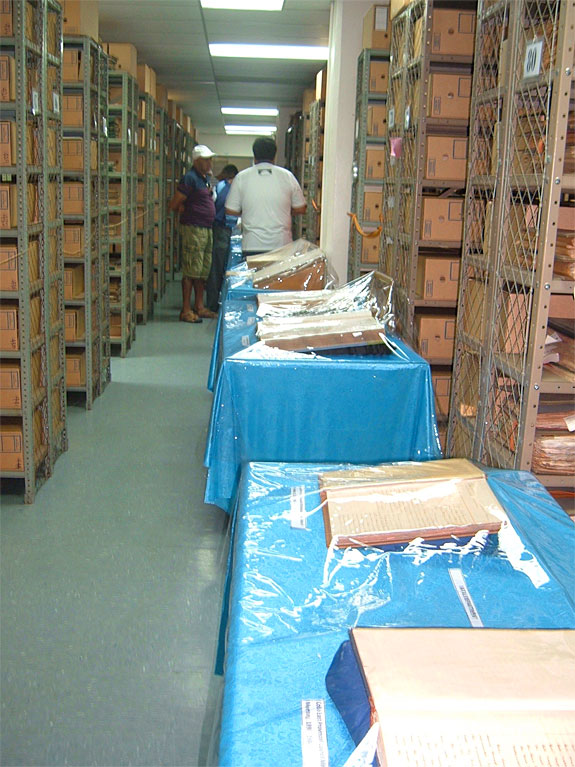
During the second week of my stay in Suva I paid a visit to USP to visit friends and colleagues. While I was there, I had a meeting with Jason Flello, Records Management Manager, who shared his audacious ideas and plans to add a university archives to his program. He felt that the time was right to add an archives to the university, and I could not have agreed more. Thus, he has requested that I aid him in the process going forward. The manager has recently drafted a University Archives Policy and a funding application to get things moving. His more immediate plans were to renovate a couple of out buildings that belong to the records management unit, or to have a new archives building built. The goal was to have this archives ready in time to coincide with USP's 50th anniversary in 2018, but, realistically, it was looking more likely that only the ground would be broken. In the meantime there is a lot to do to prepare and organize for this much needed archives. I really look forward to working with the records management team and forming relationships with relevant university departments whose unique records will form the heart of the archives.
Overall, it was a very busy two weeks in Suva, and it was good to be back working along colleagues. It was a pleasure to see how archives throughout the city continued to be managed and safe-kept more seriously and passionately than ever before. It is enlightening to see how archival organizations are finding ways to promote their collections. This proactive approach to show that archives matter is crucial for archives to move forward within the community, the city, and the country as well. There is still much volunteer work and help that is needed at the National Archives of Fiji, the Oceania Marist Province and at the University of South Pacific and projects are already in the planning stage. I look forward to keeping a strong and committed relationship with new and old colleagues throughout Suva.
